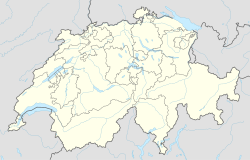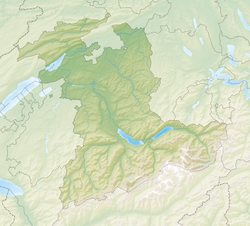Saules (Bern)
| Saules | ||
|---|---|---|

Saules village
|
||
|
||
| Coordinates: 47°15′N 07°13′E / 47.250°N 7.217°ECoordinates: 47°15′N 07°13′E / 47.250°N 7.217°E | ||
| Country | Switzerland | |
| Canton | Bern | |
| District | Jura bernois | |
| Government | ||
| • Mayor | Maire | |
| Area | ||
| • Total | 4.28 km2 (1.65 sq mi) | |
| Elevation | 743 m (2,438 ft) | |
| Population (Dec 2015) | ||
| • Total | 159 | |
| • Density | 37/km2 (96/sq mi) | |
| Postal code | 2732 | |
| SFOS number | 0707 | |
| Surrounded by | Reconvilier, Saicourt, Sornetan, Souboz, Loveresse | |
| Website |
website missing SFSO statistics |
|
Saules is a municipality in the Jura bernois administrative district in the canton of Bern in Switzerland. It is located in the French-speaking Bernese Jura (Jura Bernois).
Saules is first mentioned in 1179 as Sales. The municipality was formerly known by its German name Saal, however, that name is no longer used.
In 1246 the nobleman Albert of Saules was mentioned as a representative of Moutier-Grandval Abbey. In 1294 the nobleman Guidon of Saules was mentioned as owned a mill in the village. His mill remained in operation until 1912. The family name continues to appear in records from the 13th and 14th centuries. For most of the village's history it was under the authority of the provost of Moutier-Grandval and was a part of the lands of the Prince-Bishop of Basel. After the 1798 French invasion, Saules became part of the French Département of Mont-Terrible. Three years later, in 1800 it became part of the Département of Haut-Rhin. After Napoleon's defeat and the Congress of Vienna, Saules was assigned to the Canton of Bern in 1815.
The village has remained mostly agrarian. Today about two-thirds of the jobs in Saules are still in agriculture, with a furniture shop and a sawmill providing some industrial jobs.
Saules has an area of 4.28 km2 (1.65 sq mi). As of 2012, a total of 1.84 km2 (0.71 sq mi) or 43.0% is used for agricultural purposes, while 2.25 km2 (0.87 sq mi) or 52.6% is forested. Of the rest of the land, 0.16 km2 (0.062 sq mi) or 3.7% is settled (buildings or roads) and 0.01 km2 (2.5 acres) or 0.2% is unproductive land.
...
Wikipedia




